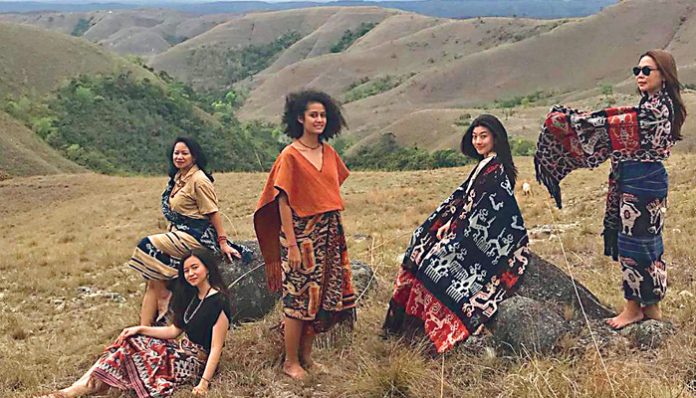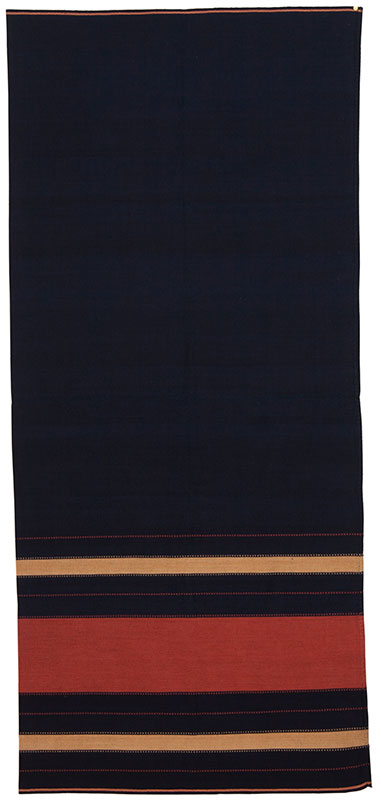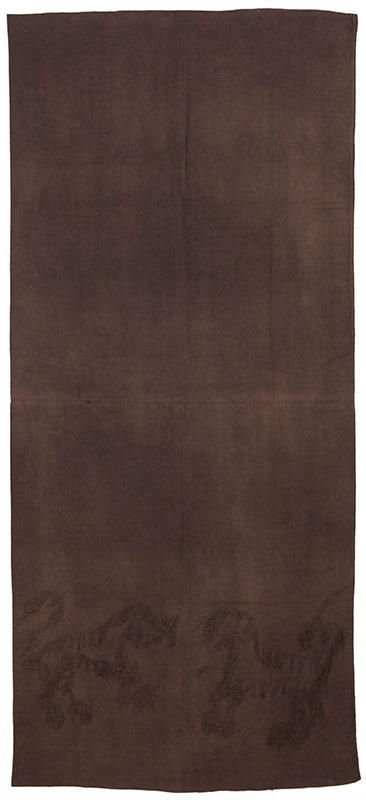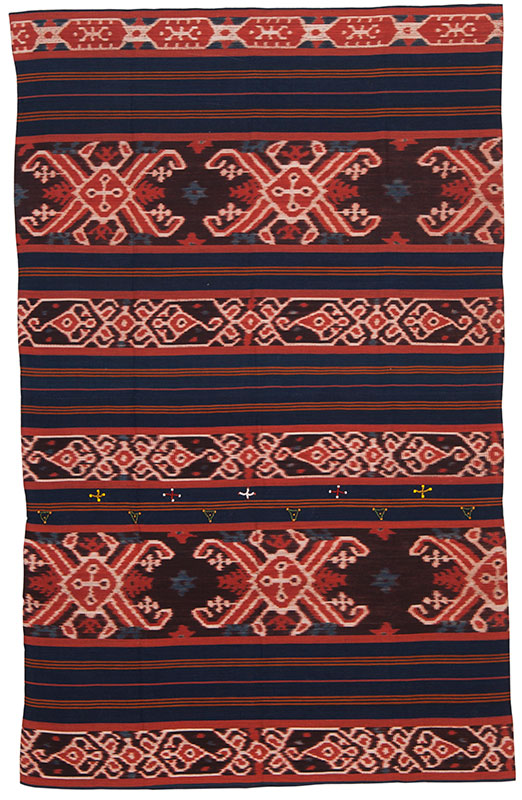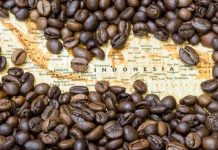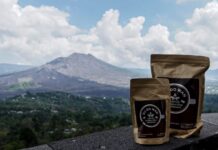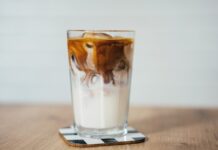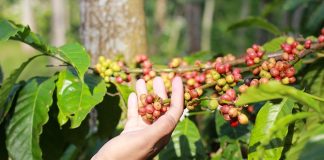Indonesia is rich in culture. From food, rituals to traditions, each area has distinctly different or a mix from other cultures surrounding it. Textiles and clothing are another aspect of culture that cannot be left behind as it is a very important part from everyday life to cultural rituals. Sumba is no exception, with numerous different ‘ikat‘ from every area that has been passed down from one generation to the other.
Ikat made in Sumba is not a cloth that can be created by just anyone, as the process is complex and lengthy starting from collecting materials in the forest to making ikat weaving. The process usually takes 2 to 3 months for regular sized ikat to 5 months if it is large in size. Amazingly, all Sumba cloths passes 42 stages of work process and can not be done alone.
Here are different textiles that are exclusively in Sumba area:
Tiara Haringgi
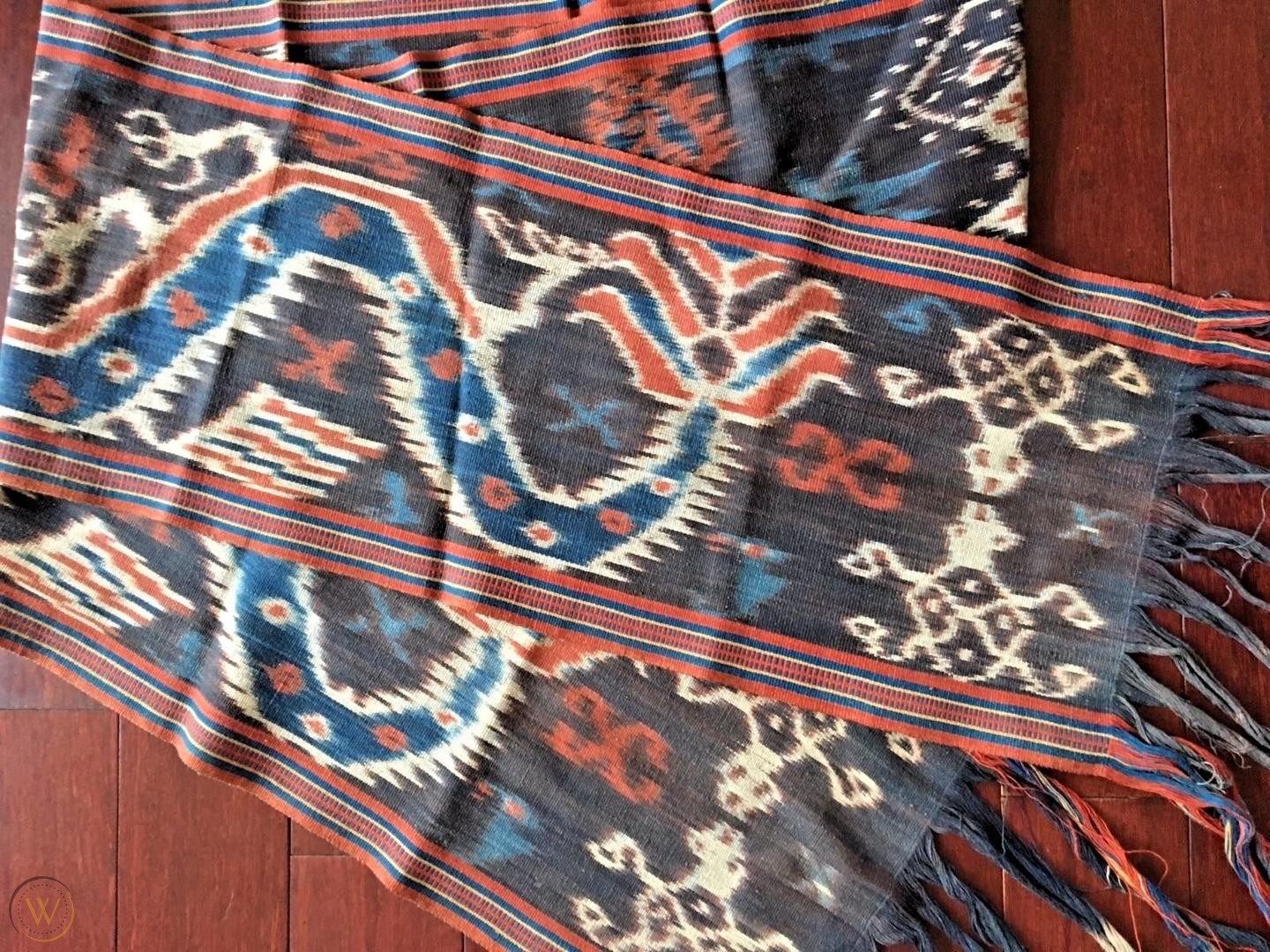
This woven cloth is usually worn by Sumbanese woman over their shoulders to complete their traditional attire. The central design of the Tiara Haringgi is called kapaki rianja, the dancing frog. In dry areas like Sumba where rain is vital, the appearance of frogs signifies that their prayers are heard by God.
The Tiara Haringgi is a textile that is only used during cultural ceremonies, which is why is it is of high value. Making it is also a difficult process as well, for the pattern requires planning before starting the process. As the pattern has to be decided in advance, the weaver has to have a specific image of the pattern in their minds then insert as many as several hundred heddle sticks into the unwoven threads on the loom.
Besides from that, there is also a second more narrower type of tiara. This one is patterned with ikat instead of supplementary warps. It is sometimes used as a headband to hold in place a large tortoiseshell comb. This tiara is specifically used by men, folded so that one fringe points upwards while the other drapes over one temple. The symbolism to this arrangement is that it connects the wearer to the ancestral spirits of both heaven and earth.
Lau Hemba Kiku Kawadak
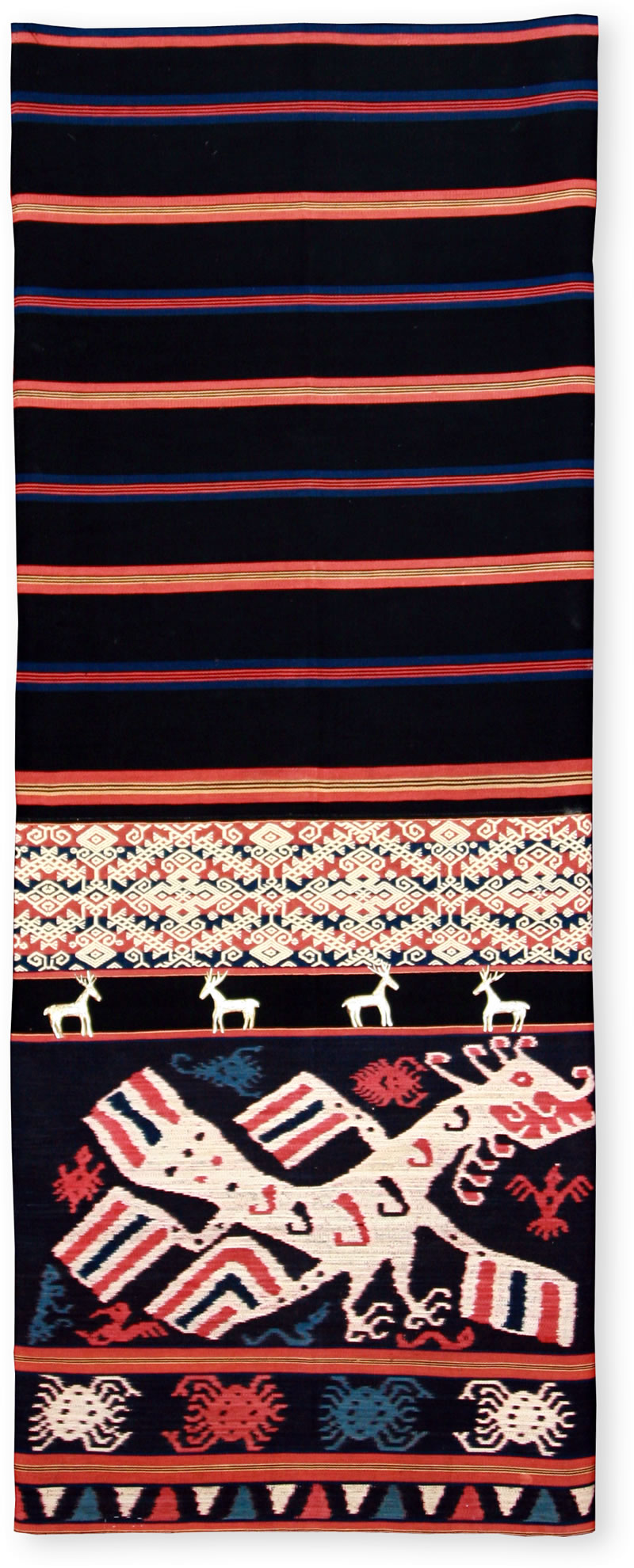
The Lau Hemba Kiku Kawadak is specifically worn by a high-caste servant called a papanggangu during a Sumbanese royal funeral. They are responsible of escorting the dead nobleman in his funeral procession.
During the procession, the papanggangu will be adorned with a heavy, waist length veil. As she slips into a head-induced trance, the spirits of ancestors take hold of very body and direct the funeral procession.
Lau Pahudu Hada
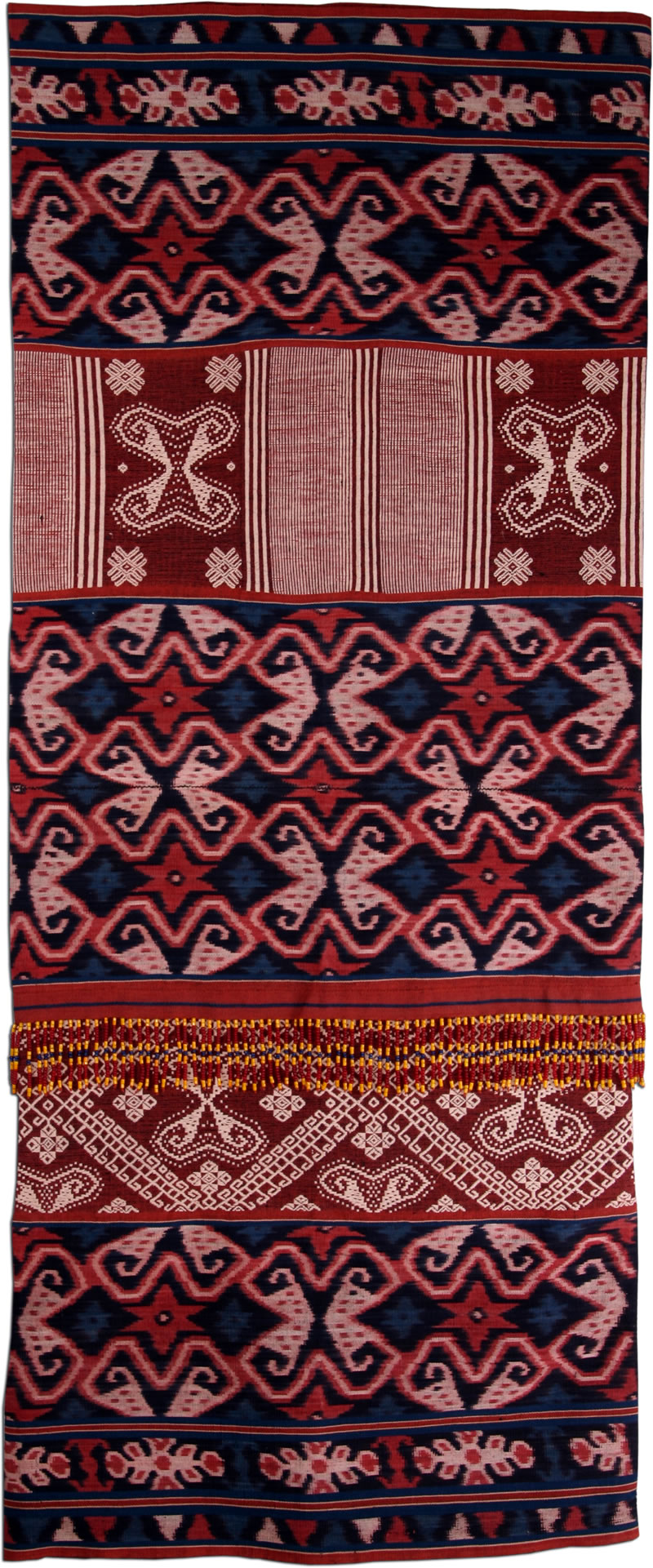
While other textiles in this list have stayed the same throughout generations, Lau Pahudu Hada is made with a combination of traditional styles which has changed throughout the centuries. Due to the marriage of the Princess of Pau with the royal family of Rindi in East Sumba, textiles have also changed to become an innovative combination of styles.
While the supplementary warp patterning technique is called pahikung, the particular style and motifs in the ikat sections come from Rindi’s royal heritage. The karihu or seashell motif made into the textile was once the exclusive domain of the Rindi royal family. Meanwhile, bead colors of blue, black, white and red are specifically used for the highest nobility.
Hinggi
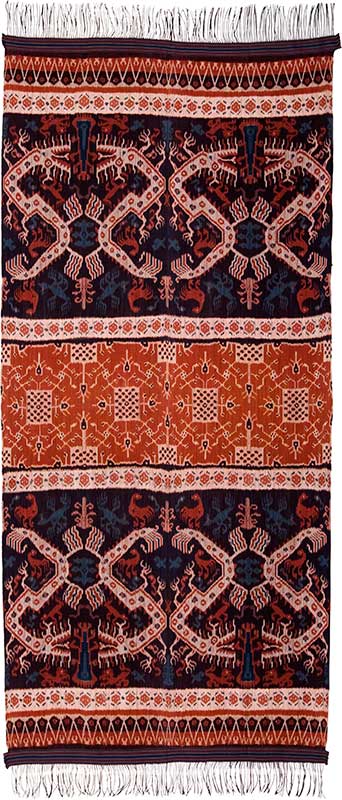
Hinggi are exclusively worn by men, typically used by folding one across the shoulder and the other around their waist. Its designs identify the man’s rank in the social order, his clan as well as help his ancestors to recognize him in the next world. The motif on this hinggi determines the characteristics of the man himself, arranged in as many as eleven bands of varying width. Even in death, a man will be covered with his hinggi.
Lau Witikau Ngeri
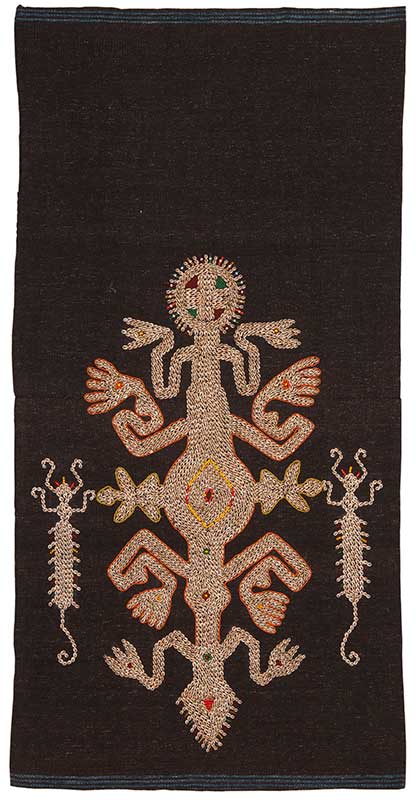
This piece of textile depics marapu, who is the first deified ancestor of the clan. The all-knowing marapu has the power to take active part in everyday events, while his protection is invaluable to the clan. Marapu’s face can never be seen and is never shown, even in the cloth.
Back in the day, East Sumbanese queens give the lau witikau ngeri to their daughters on their wedding day in order to bless the new branch of the family with marapu’s powers. After their deaths, their lau witikaus would cover the upper bodies of the king and queen during their funeral processions.
Lau Pahudu Rara
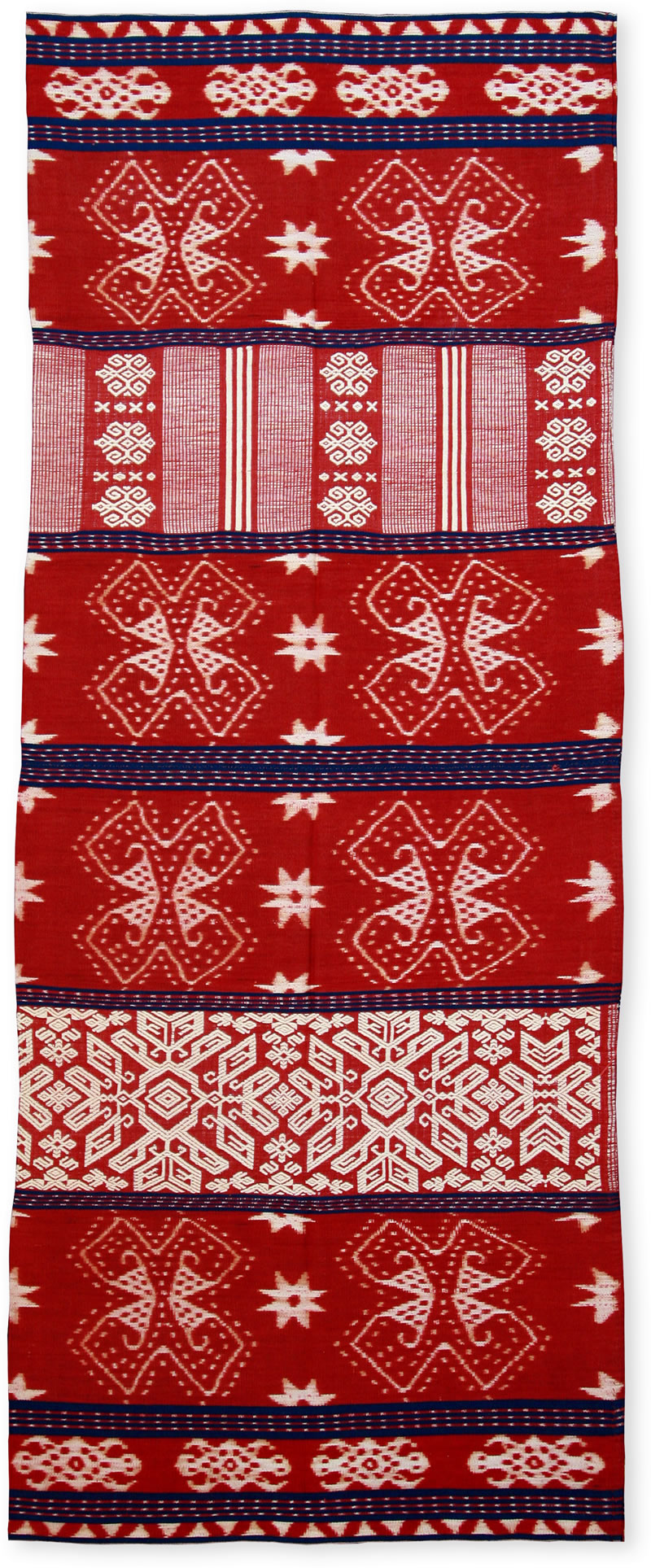
Lau Pahudu Rara are tubular sarongs from Rindi in Sumba that depics semi-mythical figures that were first to arrive in Sumba named ‘marapu uma ndapa taungu’ (translated as ‘the first to arrive’). Usually there would be dominant motifs of seashells (called karihu), which recalls the sea journey that brought the ancestors to Sumba. As the ancestors are revered by the village people, so do the same reverence to ancestral motifs. Only a woman of wealth and rank would wear a symbol like the karihu.
If it comes with a kambhiha or the ‘horse’s hoofprint’, only certain people could wear such attire. This is because horses are deemed sources of wealth in Sumba. Horses are part of the bridewealth gift exchange at marriage, and a riderless horse leads the bodies of the noble dead to their massive stone tombs.

